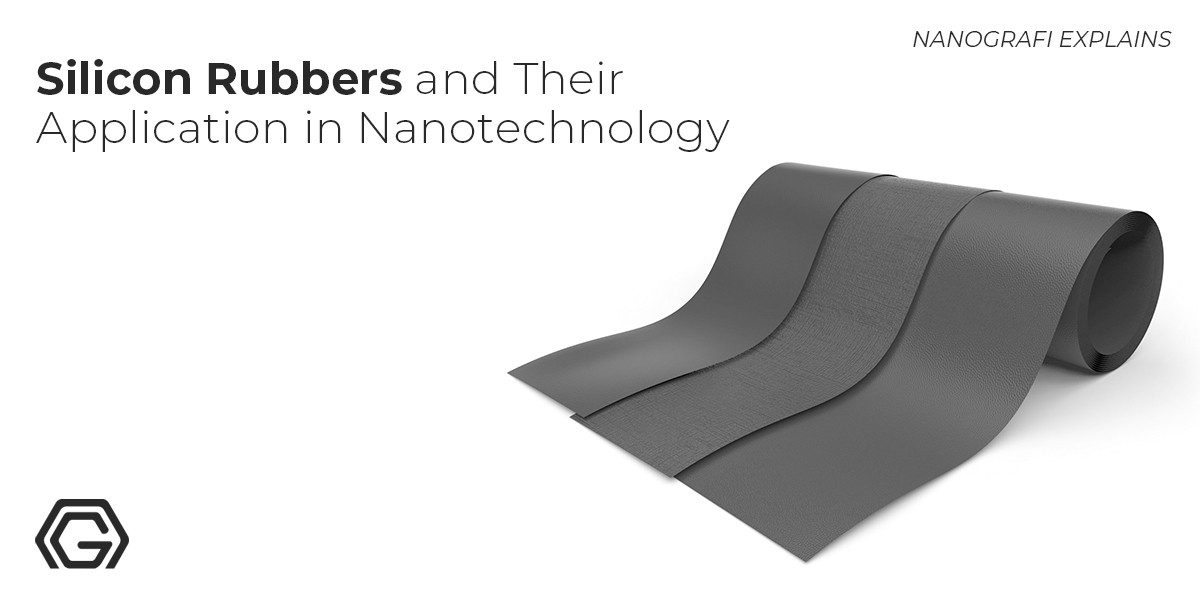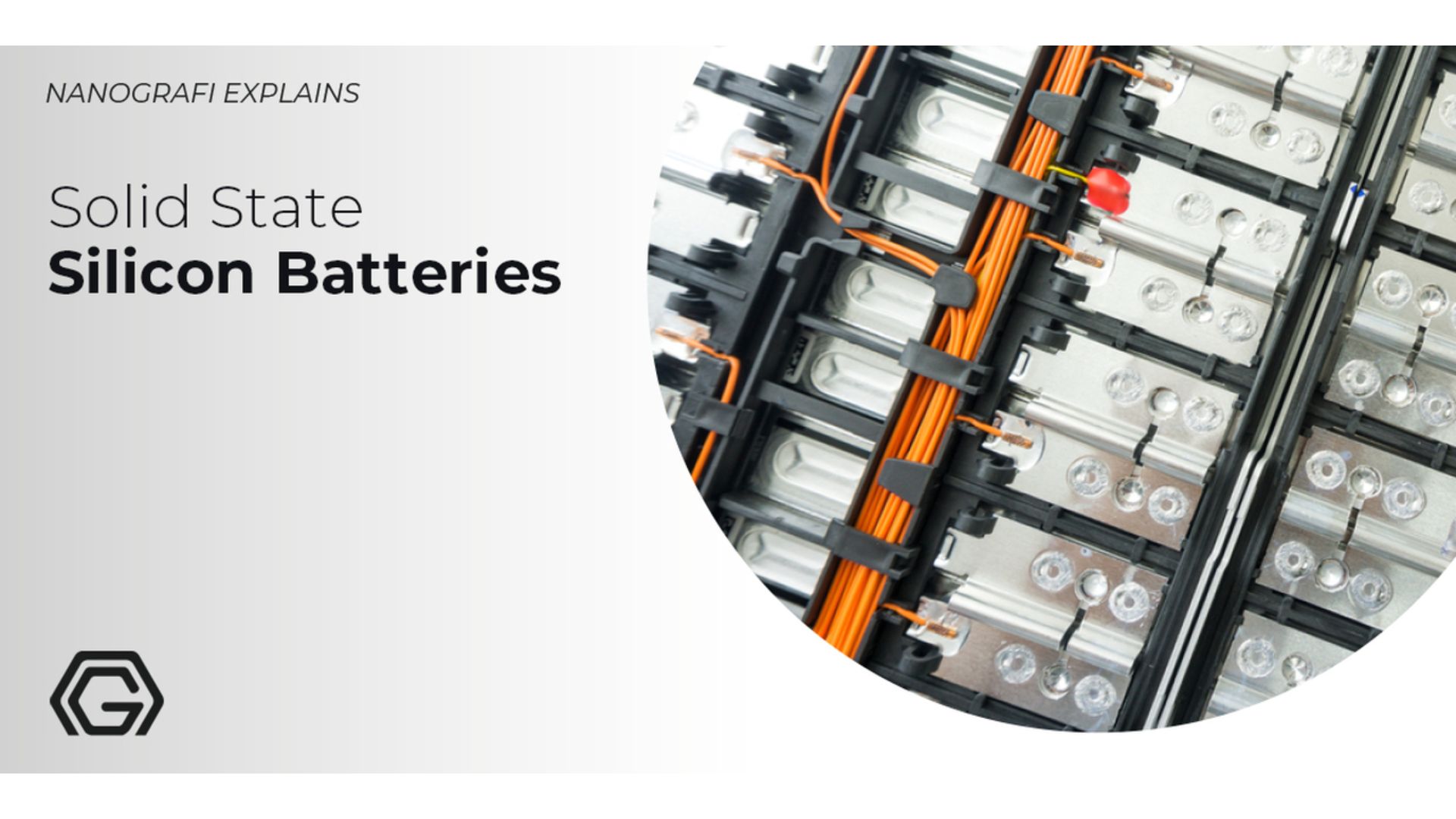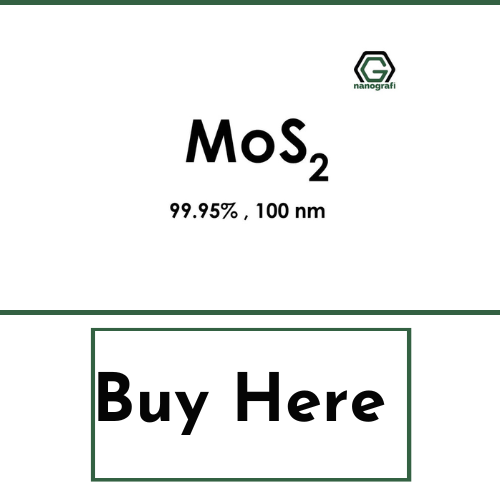Applications of Silicon Rubbers in Nanotechnology
Silicon rubber is a material comprising of silicone and rubber in which rubber comprises carbon, hydrogen, and oxygen. These materials are rapidly being used in various industries where they are providing all sorts of benefits and are being considered as one of the most useful materials.
They possess remarkable properties all of which when combined bring out applications that add up to the quality of products being manufactured in different industries. There are several types of silicone rubbers all of which are briefly explained below along with the applications preferably in the field of nanotechnology.
Introduction
A polymer, silicon, makes up silicon rubber which is a rubber-like material and an elastomer. Silicon rubber contains silicon together with oxygen, hydrogen, and carbon. There are various preparations of silicone rubbers in the industry and they are utilized broadly. They are usually two- or one-part polymers. Silicone rubbers have fillers for lessening cost or enhancing characteristics.
Silicon rubber shows resistance towards extreme temperatures of -70-570 °F (-55-300 °C) and towards extreme environments as it doesn’t lose its beneficial characteristics even in such extreme conditions.
Generally, silicon rubber is stable and non-reactive. Silicon rubbers can be easily shaped and manufactured. Such and more remarkable characteristics of silicon rubber make silicon rubber available in a broad range of products like in hardware, home repair, medical implants, medical devices, electronics, apparel for instance footwear, undergarments, and sportswear; food storage products, baking, cooking, automotive applications, voltage line insulators, and in products like silicone sealants.
Properties of Silicone Rubbers
Chemical structure and the organic groups (phenyl, vinyl, methyl, tri-fluoro propyl, or other groups) highly determine the characteristics of the silicon rubber. Better characteristics are possessed by silicon rubber than organic rubber as Si-O is possessed by silicon rubber in its structure. Following are the better characteristics of silicon rubber; ozone resistance, weatherability, abrasion resistance, electrical insulation, chemical stability, and heat resistance. Although it depends on exposure's duration, silicone rubber shows great resistance towards extreme temperatures. If the parts are made up of silicon rubber then on long-term exposure to UV rays, rain, and wind, the physical characteristics don't change at all. Even ozone is not capable of affecting silicon rubber however most of the organic rubbers get affected.
Different Methods and Types for Synthesizing Silicone Rubbers
In silicone rubbers, phenyl, vinyl, methyl, or other groups are the organic groups.
Classification of silicon rubbers based on ASTM D1418 standard:
Methyl Group – MQ refers to it. It is also called methyl silicone rubber or dimethyl silicone elastomer/rubber.
Phenyl and Methyl Groups – It performs remarkably at room temperatures and is also called phenyl silicone rubber or methyl-phenyl silicone elastomer/rubber. It is discussed as PMQ.
Vinyl and Methyl Groups – It is generally discussed as VMQ and known as methyl vinyl silicone elastomer/rubber.
Vinyl, Phenyl, and Methyl Groups – It is discussed as PVMQ but it’s famous for its remarkable performance at low temperature.
Methyl, Vinyl, and Fluoro groups – They show high resistance towards chemical attach (solvent, oil, fuel…). They are discussed as FVMQ and are known as fluoro-silicone rubber or fluorinated rubber.
If the classification is not based on its molecular structure then it is because of the method that is used to process silicone rubber or the classification can be because of the viscosity of the silicone rubber.
There are 3 major forms in which silicon rubber is available:
1. Room Temperature Vulcanized, RTV – RTV silicone rubber: It is a silicone rubber type that is made from two-component (RTV-2) or one-part (RTV-1) systems where their hardness varies from extremely soft to medium. This type is available for sealants, encapsulations, potting, etc.
2. Liquid Silicone Rubber, LSR - Liquid silicone rubber: It includes shorter chains as it contains lower molecular weight polymers. It is processed on extrusion equipment and particularly made injection molding. Better flow characteristics are possessed by it.
3. Solid Silicone Rubber or High-Temperature Vulcanized, HTV - Solid silicone rubber:It has long polymer chains as it possesses polymers with a high molecular weight. They need traditional rubber processing approaches and they are also available in the uncured form.
Mechanical properties
Mechanical characteristics are maintained by liquid silicon rubber in extremely low and high temperatures (-50°C-250°C). Remarkable durability, optical clarity, and design freedom are provided by this heat-cured elastomer. Diverse applications like automotive lighting, electronics, high power LED lighting, and many others are served by this ground-breaking transparent material.
Synthesis Method
Three steps are mainly involved in the synthesis of silicone rubbers, for instance, chloro-silane formation followed by hydrolysis and polymerization. Silicones are being made commercially today from chloro-silanes made following Rochow’s direct process. This reaction occurs in a silicon metal powder's fluidized bed in which methyl-chlorides stream flows typically at 1-5 bar pressures and 250-350 C temperatures. Chlorosilanes are given by this reaction. Here, a copper-based catalyst is utilized.
A mixture of silanes
Different silanes mixture containing dimethyldichlorosilane, Me2SiCl2 are obtained. Distillation is used to separate dimethyldichlorosilane and then it is utilized as a monomer for producing Polydimethylsiloxanes by dimethyldichlorosilane hydrolysis in excess water’s presence.
A di-silanol “Me2Si(OH)2” is formally given by this exothermic and heterogeneous reaction in which catalyst is HCl and di-silanol Me2Si(OH)2 willingly condenses for giving a mixture of cyclic or linear oligomers through intra- or inter-molecular condensation. Although, a very short chain is possessed by the cyclic and linear oligomers obtained by dimethyldichlorosilane’s hydrolysis for a lot of the application and functions. They should be polymerized (cyclic) or condensed (linear) and crosslinking for obtaining elastomers.
Liquid Silicone Rubber
It is a thermoset elastomer of high purity and low viscosity and it maintains its mechanical characteristics over a broad range of temperatures from -50 C-250 C. This invention is a remarkable solution for you if you want high optical clarity combined with long durability in extreme conditions (UV, high temperature, etc…).
High-Temperature-Vulcanizing (HTV)
Higher viscosity rubbers like high-temperature-vulcanizing (HTV), heat-curable elastomers, are processed and mixed similarly to other elastomers. Organic peroxides or platinum catalyst is used to cure them at increased temperature.
Major characteristics of Silicone Rubbers
Their excellent performance characteristics are because of their high bond energy and strong Si-O chemical structure. Silicone rubbers have many benefits including a broad range of service temperatures, remarkable thermoxidative and thermal resistance (even the binding energy of C-C bonds is less and smaller than the binding energy of Si-O-Si. It also shows remarkable resistance towards sunlight, ozone, and oxygen. It already exhibits resistance towards particle and electromagnetic radiation, for instance, gamma, beta, alpha, and UV rays.
It possesses great characteristics, for instance, it is non-adhesive, non-sticky; it possesses low toxicity; it has optical transparency, it has remarkable insulation characteristics, it is flexible at low temperature because of its low glass transition temperature (Tg). Silicone rubber has high bio-compatibility, low chemical reactivity, and remarkable mechanical characteristics for instance high elongation, and high tear strength.
Fillers and Additives for Silicon Rubber
In order to achieve high-performance material for the required application, numerous fillers, crosslinkers, and additives are contained by silicone rubber.
Crosslinking – Either peroxide crosslinkers or platinum catalysts can be used to crosslink/cure silicone rubbers which leads to a cured and mechanically stable product.
Fillers – Most typical non-reinforcing and reinforcing fillers are Quartz and Pyrogenic silica with extremely high BET surface areas. We use fillers for making a silicon rubber of increased conductivity behavior (carbon black) or high tear strength.
Stabilizers – Stabilizers are added in silicon rubber for improving the silicon rubber’s heat resistance.
Flame Retardants – Silicone rubber’s fire resistance is increased by using additives like ceric compounds, zinc compounds, aluminum trihydrate, carbon black, or platinum compounds.
Colors and Pigments – Silicone rubber exhibits high transparency options than other black rubbers, and that’s why it is easy for pigments to color them according to the demands of the application.
Rubber nanocomposites
Dispersion modes, compatibilization, interfacial filler-elastomer interactions, and rubber and filler’s nature greatly influence the characteristics of rubber nanocomposites. Numerous fillers are utilized in the production of rubber nanocomposites. Nanoclays, bio-nanofibers, graphene, carbon nanotubes, and nano-silica are among those numerous fillers that have a lot of significance in regulating their characteristics.
Preparation Methods
Many methods are used to produce nanocomposites, the most usually utilized methods are in situ polymerization, solution casting, and melt mixing. However, the effort is also done to describe the rest of the methods in this paper but these three conventional methods are in detail.
Solvent casting
In the solvent casting, the filler and matrix are separately dispersed in appropriate solvents and then they are both mixed. Dried composite samples are obtained when the solvent is evaporated from the casted suspensions. Das et al. used ethanol as a dispersing agent and got good CNTs dispersion, therefore, providing remarkable mechanical characteristics for the composites. Toluene was used in the solvent casting method and that method was used by Khalid et al. for dispersing carbon nanotubes in NR. Rubber nanocomposites based on butadiene rubber (BR) and styrene-butadiene rubber (SBR) were prepared by Ganter et al. through a solution mixing process. Solution blending is used to report graphene/rubber nanocomposites. Silicon rubber/graphene composites are fabricated by Haiqing et al. through solution mixing in THF solvent and in doing so, he attained remarkable reinforcement.
Latex stage compounding
This compounding method holds great significance as most rubbers are in latex form. Filler is added along with the addition of curing agents (for instance stearic acid, ZnO, and Sulphur) into the latex and the mixing follows, casting steps similar to those of solution mixing. Melt mixing technique and combined latex compounding were used to prepare rubber/ Ca-montmorillonite (Ca-MMT) nanocomposites containing well exfoliated Ca-MMT layers.
In-situ polymerization
This is an effective and efficient method for obtaining fillers’ uniform dispersion in elastomers. Important reagents and monomer mix with the filler here for provoking the reaction of polymerization in solvent’s absence or presence. One can obtain a uniform dispersion of fillers inside the matrix during the reaction of polymerization. The strong interfacial bonds result in a greater reinforcement effect. In Zeigler catalyst’s presence, bis (cyclopentadienyl) zirconium compounds were used by Kaminsky et al. for forming atactic polypropylene and then reacted with diolefins and ethylene for manufacturing EPDM rubber. Zirconiubsed Ziegler catalyst was used to make EPDM terpolymers with ethylidene norbornene as diene monomer by them.
Melt blending/extrusion
This method's main benefit is the absence of solvent and it is very important regarding the industry and even at high shear force and high temperature, it offers to mix. Scientists utilized internal mixers, extruders, etc. for this aim. Das et al. reported that melt mixing can lead to carbon nanotube’s good dispersion in styrene-butadiene (SBR) and butadiene rubber (BR) blend.
According to Vu et al., higher tensile characteristics were showed by the melt mixing-made compounds of sodium MMT clay and epoxidized natural rubber (ENR) as compared to precipitated silica’s compounds. Varghese et al. studied the sulfur-cured ENR recipes possessing the layered silicates that were formed by melt compounding. The same process was used to fabricate EPDM/nano ZnO composites.
To get more information,
you can read our other blog post.
Applications of Silicon Rubber
Fillers
Little resistance is shown by pure silicone rubber towards erosion and tracking. There needs to be some improvement in silicon rubber’s characteristics for improving and extending the service effect and the service life. Fillers are then added for lessening the costs of the polymer and enhancing the certain characteristics of the polymer. The more the filler content is of the material, the more and better will be the tracking performance however, this factor is capable of delaying the material’s hydrophobic characteristics.
Adhesion's degree with the polymer chains, orientation in the matrix, dispersion's degree, structure and size of the particle, the morphology of the filler, and concentration of the filler determines the extent of improvement in the characteristics of the nanocomposite. Various methods other than mixing are available for enhancing the particle dispersion, including the modification of the surface of nano/microparticles (nano/micro fillers) through chemical and physical methods and utilizing surfactants. The influence of surfactants was observed by Ramire et al. on mechanical and electrical characteristics of a 2-part silicon rubber (SiR) matrix.
Influence of surfactants
Nanofiller dispersion was greatly influenced by the surfactants but there should be a balance between the dispersion of the particles and matrix adsorption. Lessened adsorption characteristics can be a result of a surfactant’s high concentration in the matrix material. Extending and reinforcing are the two types of fillers. If one wants to enhance the abrasion resistance, tear strength, modulus, and tensile strength, then one should use a reinforcing type of filler. Carbon black, aerogel silica, and fumed silica are the common silicone rubber reinforcing fillers. Non-reinforcing or semi-reinforcing material comes in the extending filler.
Extending fillers are used for extending the formulation and imparting some desirable characteristics. Zinc oxide, Alumina trihydrate, whiting, clay, titanium dioxide, and ground quartz are the common extending fillers. According to the literature, they are beneficial for applications in outdoor high-voltage insulation because of the improvement in the thermal conductivity, relative permittivity, electrical conductivity, and surface hydrophobicity of silicone rubber dielectrics. This article discusses how the filler improves the characteristics and functioning of silicone rubber dielectrics.
Superhydrophobicity
The adhesion of solid contaminations can be lessened if SIR possessed such surface characteristics as superhydrophobicity, low surface energy, and anti-adhesion.
Surface leakage currents
Due to contamination, pollution flashovers and surface leakage currents would be efficiently suppressed. Various approaches, for instance, plasma treatment are proposed for increasing silicone rubber's hydrophobicity. Silicone rubber's surface was modified by Gao et al. recently by using the plasma treatment. CF4 radio frequency plasma was particularly used by them for introducing the fluorine groups onto the surface of the polymer. Using this method is the best and effective way for lowering the coefficient of friction, the surface energy, and adhesiveness of the surface, therefore forming a super-hydrophobic surface. Super-hydrophobic silicone rubber was attained by them.
Electrical conductivity
In some applications, polymers should be conductive as per requirement despite them being electrical insulators usually, particularly to dissipate electrostatic discharges. An electrically conductive polymer can be produced by incorporating the conductive filler particles into the polymeric medium.
Inorganic oxide materials
There are a huge amount of studies on using silicone rubber compounds with inorganic oxide materials. Below here are the descriptions of the most usual inorganic oxide materials utilized as the filler.
Alumina trihydrate and silica
There have been various reports and researches on the advantages of utilizing silica (SiO2) and alumina trihydrate (ATH) in silicone rubber as fillers however one of the complicated studies indicates that alumina trihydrate is not important for imparting the resistance towards erosion and tracking. Alumina trihydrate (ATH) is typically added to the silicon rubber as a flame retardant and an anti-tracking agent. The effect of the high temperature vulcanized silicone rubber and ATH content on the erosion resistance, tracking, and electrical insulation characteristics were studied by Han et al. According to the results, the silicone rubber that has an ATH of 130 phr majorly improves silicone rubber’s tracking, arc resistance, and erosion resistance.
The optimum amount of ATH
ATH is capable of being broadly utilized for high-voltage insulators as a housing material. However, large amounts of ATH to HTV results in good resistance towards erosion and declined mechanical characteristics according to another study.
Influence on electrical performance
RTV silicon rubber coating’s electrical performance was influenced by the usage of the ATH filler in the formulation of the material according to the reports. An optimum filler content may exist, which can ensure the coating’s lifetime and required performance.
Zinc oxide
Having 3.3 eV of bandgap at room temperature, zinc oxide is a significant semiconductor material. Zinc oxide has ZnO as its symbol. The thermal conductivity and relative permittivity of the composite can be increased by zinc oxide fillers. Scientists have studied silicone rubber’s thermal and mechanical characteristics, especially of those silicon rubbers that are incorporated with zinc oxide. ZnO-filled silicone rubber displayed a better thermal performance than Al2O3-filled silicone rubber according to Sim et al. Also, Zinc oxide is a good reinforcement filler to enhance the mechanical characteristics of the silicone rubber compound as compared to Al2O3.
Titanium oxide
Recently, in environmental applications like waste-water purification, anti-bacterial, and self-cleaning, titanium dioxide has been used in a broad range. Titanium dioxide has a formula of TiO2 and it displays high photocatalytic efficiency. Titanium dioxide is a wide band-gap (3.2 eV) semiconductor. Titanium dioxide is a good option for the protection of polymeric material because of its stable characteristics, low cost, and combined properties and features. When utilized as a filler in polymeric materials, titanium dioxide enhances the electrical and thermal characteristics. Titanium dioxide is a significant filler when it comes to achieving higher relative permittivity and high thermal conductivity. Although, there is still little publication on the characteristics of the TiO2-filled silicon rubber for outdoor applications.
Improvement of mechanical and photocatalytic characteristics
Photocatalytic and mechanical properties of the silicone rubber incorporated with TiO2 were studied by Silva et al. to bring the improvement in those characteristics. It was indicated through the results that on the addition of 10 phr of TiO2, there was an enhancement in the thermal stability of PDMS/TiO2.
Barium titanate
BaTiO3 is used as a ceramic filler as it possesses high electrical breakdown strength and a high dielectric constant. Composite’s thermal stability can be made better on the addition of the BaTiO3 nanoparticles to polyimide. Decomposition temperature can get higher on increasing the content of BaTiO3 and that content can also control the dielectric constants, as the dielectric constant increases with the increase in the content of BaTiO3. Barium titrate has good dielectric constants of 37. Until now, there are no studies or researches on the characteristics of the BaTiO3-filled silicone rubber for outdoor insulator applications.
Conclusion
Silicone rubber is an efficient material being used in various fields for various purposes, altogether enhancing the productivity of industries throughout the world. All the applications are authentic in their nature and not only provide assistance to the industries but also play a role in making human life easier through different techniques in different areas.
If you want to obtain more information, you can visit our Blografi.
References
https://www.researchgate.net/publication/256426533_Rubber_Nanocomposites_Latest_Trends_and_Concepts
https://www.nanotech-now.com/columns/?article=865
https://omnexus.specialchem.com/selection-guide/silicone-rubber-elastomer
Recent Posts
-
A New Approach to Obesity with Nanotechnology
Obesity stands out as a complex global health crisis that significantly increases the risk of chroni …1st Nov 2024 -
Graphene is the Word in Bionic Technology: EGNITE
Neuroprosthetic technologies have made significant advancements in recent years to enhance the qual …25th Oct 2024 -
MXenes from MAX Phases
MXenes, a group of two-dimensional materials derived from MAX phases, are gaining significant tracti …19th Oct 2024







